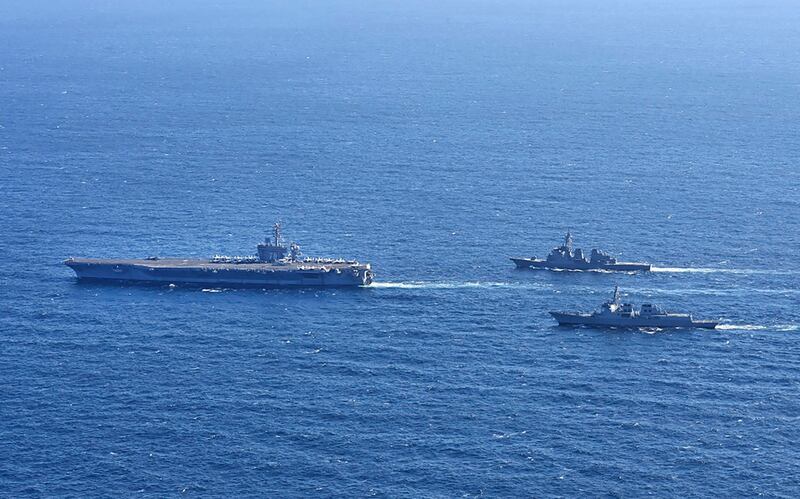North Korea said Friday it had carried out a test of an “underwater nuclear system,” showcasing its latest nuclear capabilities, underscoring the growing security challenges on the Korean peninsula.
“The Underwater Weapon System Institute under the DPRK Academy of Defence Science conducted an important test of its underwater nuclear weapon system,” an unnamed spokesman for the North’s Ministry of National Defence said in a statement, referring to North Korea’s formal name, the Democratic People’s Republic of Korea.
The “Haeil-5-23”, North Korea’s underwater nuclear system involving drones, was tested off its eastern coast to counter the allies’ joint military drills, the statement said, according to the North’s official Korean Central News Agency. The statement did not specify the exact date of the test.
“Our army’s underwater nuke-based countering posture is being further rounded off and its various maritime and underwater responsive actions will continue to deter the hostile military maneuvers of the navies of the U.S. and its allies,” it said.
Pyongyang specifically pointed out the three-day joint maritime exercises off the coast of the South’s Jeju Island – conducted by the United States, South Korea, and Japan from Monday – as a cause for its latest test. The drills involved assets from the U.S., South Korea and Japan, involving the U.S. nuclear carrier Carl Vinson and Aegis cruiser Princeton.
North Korea has long protested against the trilateral drills and has shown particular sensitivity towards the increased presence of U.S. nuclear carriers in the Korean Peninsula, largely due to its asymmetrical conventional capability.
“The U.S., Japan and the Republic of Korea are getting frantic in their provocative military exercises from the outset of the year,” the North’s ministry said.

Underwater nuclear strike capabilities pose a significant threat to the allies due to the difficulty in spotting them. Submarine-launched weapons can be deployed covertly, often evading the allies’ detection systems, potentially offering Pyongyang a more elusive means of deploying its nuclear weapons.
Pyongyang’s latest threat came as South Korea urged the United Nations in New York Thursday, to take action in response to North Korea’s escalating provocations. South Korea started its tenure as a non-permanent member of the council on Jan. 1, publicly vowing to leverage its position to more proactively tackle the challenges posed by North Korea.
Amid the tensions North Korea’s leader Kim Jong Un pledged on Monday to amend the country’s constitution to declare Seoul as Pyongyang’s “primary and immutable enemy.”
Pyongyang has also beefed up its efforts to bolster ties with key regime backers, notably Russia, amid the growing security cooperation among the U.S., South Korea and Japan.
Russian President Vladimir Putin met North Korea’s Foreign Minister Choe Son Hui in Moscow Tuesday, and vowed to closely collaborate on efforts to jointly deal with both regional and global security matters.
Edited by Mike Firn and Elaine Chan.
